Contents
of the Summer 2015 Northants News
|
Peru 2014
(Part 2)
David
Kirkbright
|
|
With
the image on the right of Peruís magnificent, snow-capped mountains
David brings us the second part of his enviable and epic tour. Read on...
Leaving
Huarez we headed off towards Lima (where I had already spent two days at
the start of my trip) and we soon reached an altitude of 13,700 ft. as we
traversed the mountains with very little vegetation and glaciated mountain
tops only a short distance away. |
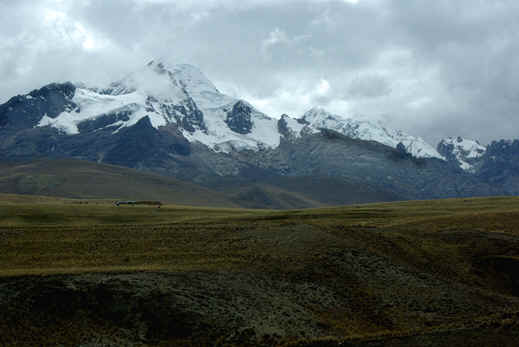
|
We
passed by glacial melt water lakes which had a bluish-white colour due to
dissolved minerals (the colour did not come out well in photos). However even at
this altitude there were still villages and at Conococha we climbed the cliffs
over the road to find Oroya
borchersii growing
amongst the sparse grass, easily spotted by their bright yellow flowers. As we
descended from the mountains the plants changed and we encountered Cleistocactus
sulcifer which is
listed in IUCN red list of endangered species. This is a very untidy plant
trailing over the cliffsides. As we returned to lower altitudes the cacti were
mixed with Bromeliads, Tillandsia
latifolia and Deuterochonia
longipetala until eventually we were back down into tropical
climates with Melocactus
fortalezensis, Armatocereus
ghiesbreghtii, Espostoa
melanostele and Haageocereus
acranthus amongst
the many plants around.
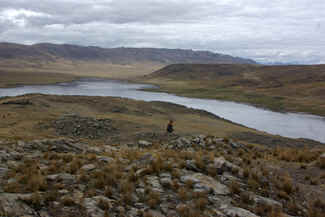 |
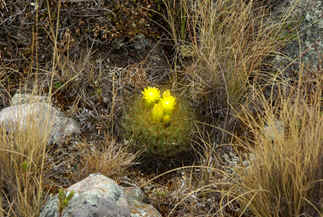 |
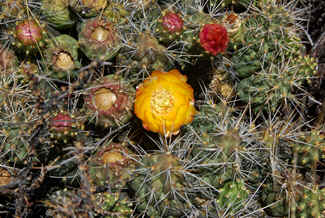 |
|
Melt water lake |
Oroya
borcherssiiI in flower |
Cumulopuntia
sphaerica
with flowers and fruit |
After an overnight stop in Lima we
then travelled on to Paracas and the following day to Nasca. This day started
with a boat trip to visit the famous wildlife sanctuary of the Ballestas Islands
where seals, sea-lions and many species of birds enjoy an abundance of food in
the cold waters that surround the islands. We arrived in mid-afternoon at our
hotel in Nasca and as most of us had hoped to take a flight over the famous
Nasca lines we were escorted to the local airport where a number of small
companies with smaller planes were supposed to take us up. However having given
the organisers there our details
and waited for around an hour we were told that there would be no more
flights that day due to poor visibility but we could come back at 06.30 the
following morning. After a lot of discussion and some argument (did we want to
fly or did we want to see plants) we eventually turned up the next morning at
the airport. We booked in then sat and waited, eventually we went through
security to airside but five minutes later were told all flights were cancelled
due to poor visibility. We phoned back to the hotel and were collected, very
disappointed, and continued our trip seeing the plants.
|
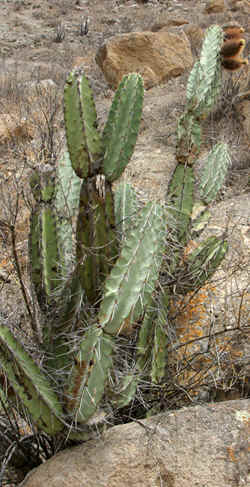
|
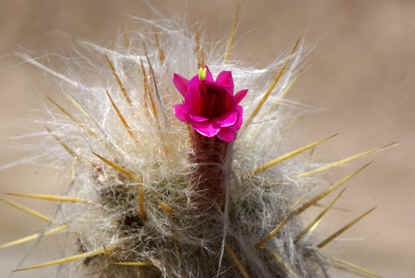
|
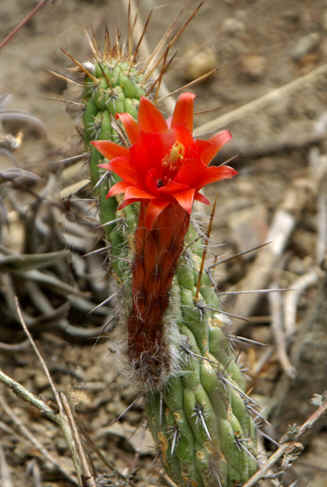
|
|
Left:
Armatocereus
ghiesbreghtii
Above:
Oreocereus
trollii in flower
Right:
Cleistocactus
sulcifer in flower
|
The
drive that day from Nasca to Chalhuanca took in many species of Armatocereus, Haageocereus,
Melocactus, Neoraimondia,
Cleistocactus, Weberbaurocereus,
Browningia, Cumulopuntia
and Tephrocactus
which certainly took away a lot of the
disappointment we felt at the start of the day. One plant that covered hillsides
was a very variable form of Oreocereus
trollii which ranged
from a pure white form to one with very brown wool particularly on newer growth.
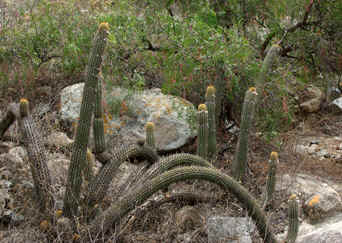 |
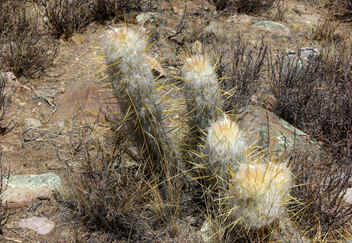 |
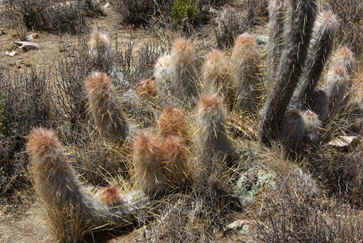 |
|
Haageocereus
acranthus |
Above
Variation
in the spination of Oreocereus
trollii |
| The
next day we drove to Ollantaytambo near to Cuzco where there were less
cacti as the conditions were becoming more like tropical rain forest but
on the way we saw Corryocactus, Echinopsis,
Cleistocactus and as usual various species of Weberbaurocereus
and Browningia. After an overnight stop we boarded an early train that cuts through
cliffs, along the edge of the Urubamba River and through rain forest to
the base of the trail up to Mach Pichu where we spent the remainder of the
day exploring the ruins of the lost Inca civilisation. This was made more
atmospheric by the clouds that kept drifting around the site (we were at
10,000 ft.) and the showers that would suddenly appear and disappear. Even
here we found plants of interest with bright orange miniature begonias
growing around the walls and steps.
After returning to Ollantaytambo
where we spent that night we then travelled to Cuzco where we had a day to relax
before getting our flights back to our home destinations.
David
|
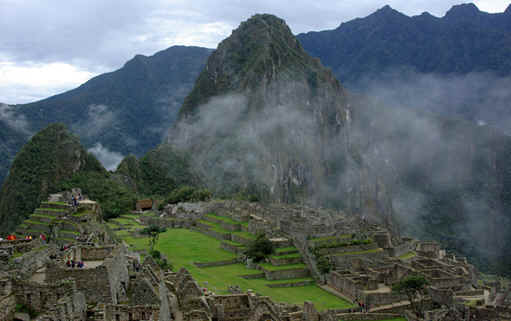
|
|
Machu Pichu, another World Heritage site from Davidís trip
to Peru |
Ed:
Thanks David,
and I am really looking forward to your talk on this trip this winter.











